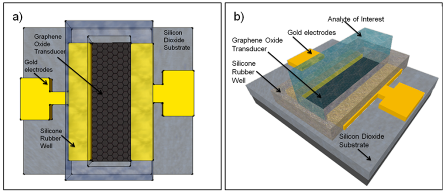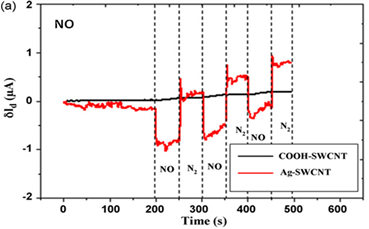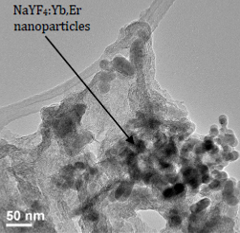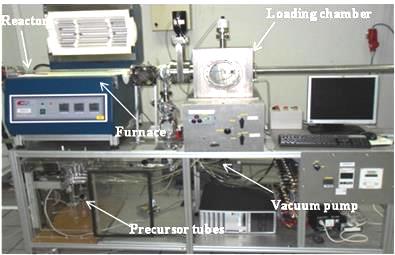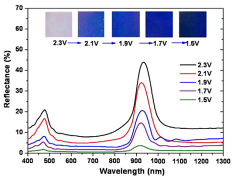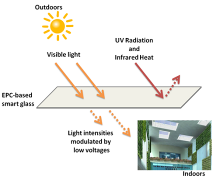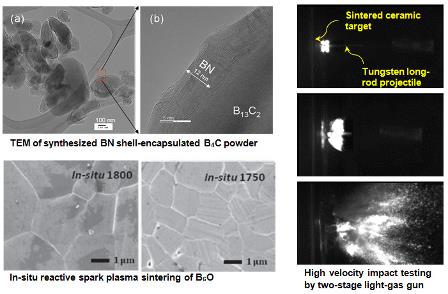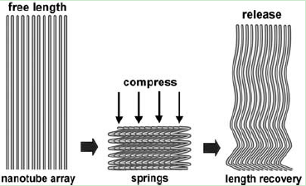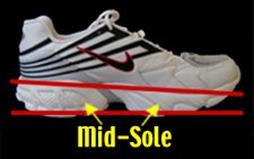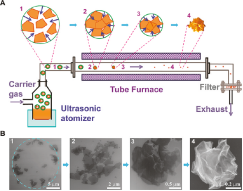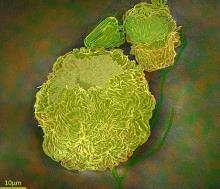

|
Alfred Tok’s Research Group |

|
Research Interests |
|
Our group’s research interests is divided into 5 areas: 1) Carbon-based Field-Effect Transistor Sensors 2) Synthesis of Nanostructured Materials using Atomic Layer Deposition 3) Hard & Tough Materials for Ballistic Protection Application 4) Institute for Sports Research 5) NRF-CREATE
1) Carbon-based Field-Effect Transistor Sensors The biosensors market, which is currently at USD 9.9 billion, is expected to reach USD 18.9 billion in 2019 (GIA Report, 2014) propelled by the growing population and health issues. Our group capitalizes on this emergent market and researches on disposable and low-cost sensor suitable for real-time sensing in field conditions. Our group focuses on sensors for biological and gas detection applications.
Biological Sensors Our group is able to scale-up and improve on the synthesis of graphene oxide to obtain the largest graphene oxide average flake size (700 µm2). These flakes have improved electrical and optical properties (145kΩ/square at 98% transparency). Our group also demonstrates the possibility of the extended growth of graphene oxide using chemical vapor deposition, thus contributing to the fundamentals of carbon growth science. These novel materials are then optimized for use in biosensors (Figure 1) for the physiological-relevant detection of sodium ions in sweat and interleukin-6 proteins in circulation. Our group seeks to elucidate these ultra-sensitive sensing mechanisms and then spin-off to other applications. Our work has been published in Nanoscale, Journal of Materials Chemistry C, European journal of applied physiology, etc.
Figure 1: (a) Top and (b) side view illustration of fabricated biological sensor for interleukin-6 proteins.
Gas Sensors Our group showed that Single-Walled Carbon Nanotube (SWCNT) based gas sensing does not only occur mainly via the Schottky modulation as reported by many. Instead, it is a combination of different effects and by increasing the types and peculiarity of the sensing pathways, the sensitivity and selectivity of the SWCNT based electronic gas sensor can be enhanced. Our studies yielded resistive gas sensors, based on Ag-SWCNTs, which are selective to nitrogen oxides even at ambient temperatures (Figure 2).
Figure 2: Current response of gas sensor to toxic NO gas at room temperature.
2) Synthesis of Nanostructured Materials using Atomic Layer Deposition (ALD) Atomic layer deposition (ALD) has evolved to be a unique tool for nanotechnology with atomic level control of the depositions, 3D conformity and homogeneity. Film depositions can be realized for complex non-planar topographies for a wide range of applications such as energy conversion and storage, nanoparticle catalysts, nanostructures for drug delivery, gas separations, sensing, and photonic applications. Our group focuses on ALD materials for solar cell, hydrogen generation and smart window applications.
Solar Cell Application MoS2 is a transition metal dichalcogenide with a structure analogous to graphene and has been extensively researched and applied in various areas. Our group works with MoS2-based NaYF4: Yb, Er nanocomposite (Figure 3) using a simple one pot decomposition method which enables the upconversion process to extend the absorption spectrum to the NIR range for efficient solar harvesting. This nanocomposite exhibits the rare phenomenon of negative photoresponse. We are also exploring ways to obtain 3D-structured MoS2 using environmentally friendly and non-toxic ALD suitable for industries.
Figure 3: Transmission Electron Microscopy image of MoS2-UCNP nanocomposite
Hydrogen Generation from H2O Photoelectrochemical (PEC) water splitting, which converts solar energy into chemical energy in the form of H2, is a promising approach to address energy security issues, and has attracted great attention in recent years. By controlling the particle size of polystyrene spheres, our group obtains 3-D inverse opal photonic crystals with various reflection peaks using a custom-made ALD machine (Figure 4). Our group has demonstrated 3D TiO2 inverse opal–coupled upconversion nanoparticles photoanode for enhanced near-infrared light harvesting and that upconversion is responsible for the photoresponse upon near-infrared exposure. Related works has been published in Small, Energy Environ. Sci., Advanced Materials etc.
Figure 4: Custom-made Atomic Layer Deposition machine
Smart Windows Building energy efficiency is a very important area of engineering, research and development in the world today, with 25% of the world’s energy being consumed just to maintain a comfortable interior environment. Our group works on electrochromic TiO2 photonic crystal-based smart glass (Figure 5) that can be used as building glass facade to modulate both the optical and thermal properties. Currently our cross-institute team has a gradient-deposition patent and several publications related to electrochromics, electrochemistry, nanoparticles and printing of electrodes.
Figure 5: TiO2 crystal-based smart glass color change properties and its eventual usage scheme.
3) Hard & Tough Materials for Ballistic Protection Application The next generation of military vehicular and soldier system requires light-weight materials with high strength-to-weight ratio. Our research focuses on the synthesis and densification of nanostructured materials & desired composite architecture to significantly raise the ballistic protection capability. The B-C-N-O group of compounds are potential candidates to form novel materials for ballistic protection application as they inherent the unique properties from both boron nitride and boron carbide which are known for their light weight, high hardness, low friction coefficient and high wear resistance. Prof Tok leads a team of collaborators in armour material research ranging from high temperature synthesis of novel superhard materials and consolidation by state-of-the-art Spark Plasma Sintering to advanced characterisation techniques such as depth of penetration test using Two-Stage Light-Gas Gun (Figure 6).
Figure 6: Synthesis and testing of hard & tough materials
4) Institute for Sports Research Our group is involved in the Institute for Sports Research, working on the damping property of midsoles which is based on carbon nanotube (CNT). CNT’s high aspect ratios (length/diameter) is particularly desirable for mechanical reinforcement, and it is found that the vertical aligned (VA)CNTs perform well in damping, to dissipate the energy absorbed under compression (Figure 7). Our present job is to tune the damping property of VACNT by adjusting the length, diameter and area density etc. parameters and try to reinforce the polymer with VACNT to fabricate midsole material (Figure 8) with better cushion property.
Figure 7: A schematic illustration shows a nanotube array compressed to folded springs and then regaining the free length upon the release of compressive load.
Figure 8: Midsole of the sports footwear
5) NRF-CREATE In accordance with the objectives of the Energy Thrust Program of the NRF-CREATE Project, our group is focused on the design and synthesis of highly functional nanomaterials, which enables energy harvesting and conservation. Recently, novel graphene oxide synthesized nanoballs and nanoflowers were synthesized. These exhibit potentials for supercapacitors and energy applications. In general, these activities results in above 50 publications, 17 patent applications and projects discussions with companies regarding commercialization possibilities.
Figure 9: Synthesis of graphene nanoballs and nanoflowers for energy harvesting and conservation. |

